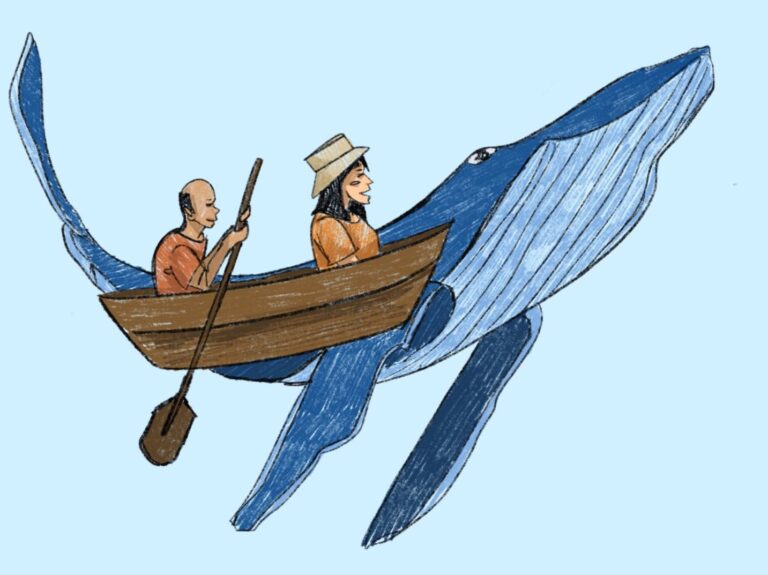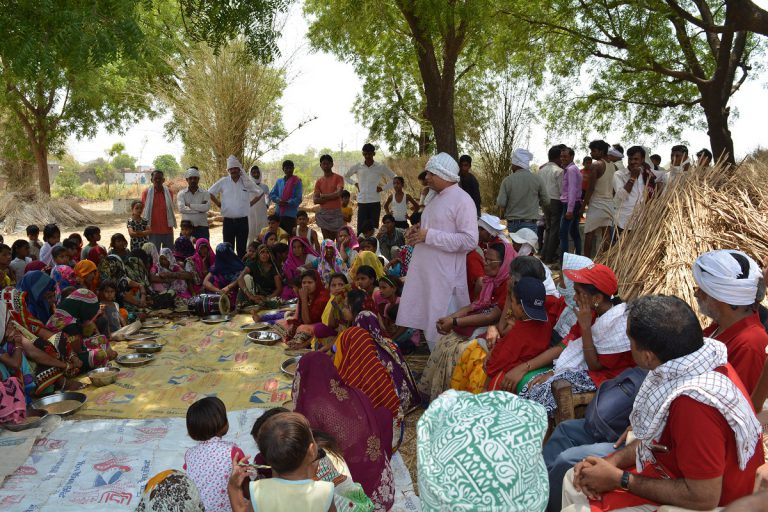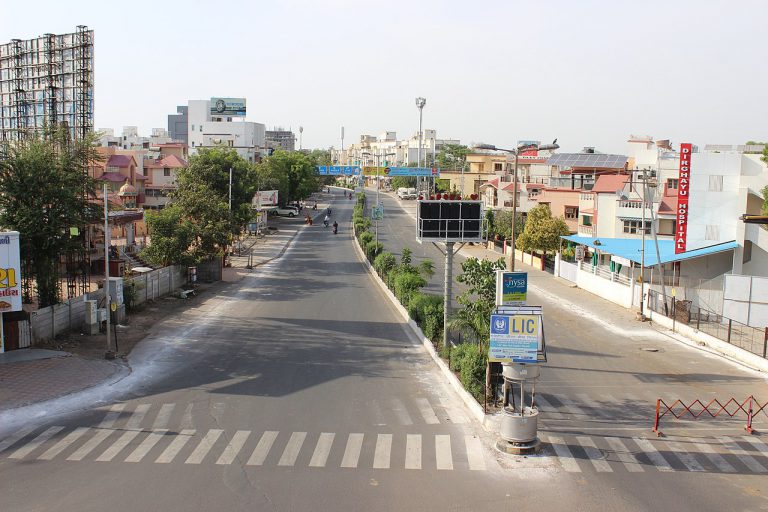Climate change and ecofeminism

Historically, women’s fate has molded their way of living to revolutionary struggle and suffering. Since the medieval ages, women have bound their lives into housewifization, and sometimes they served as a nun. The history of women’s suffering and struggle is not new, and the masses have always forsaken their difficulties. Now you might wonder, how climate change is interlinked with ecofeminism. Without further ado, let’s get into the article.
During the 18th century in Europe, with the rise of capitalism, industrialization became an open-source of employment for marginalized sectors, men and women workers, and they have relied their livelihoods on it. Later, the rapidly increasing human progress, modernization, was one of the primary causes of climate change vulnerabilities. Similarly, by the mid 19th century, the emergence of climate change and its adverse consequences has been significantly noticeable across the globe.
Since the 19th century in Germany, the German Democratic Republic (GDR) has raised slogans “Germany, united fatherland!”. They have found the reunification of Germany will resolve all the woes across the territory. Still, they didn’t utter anything about women’s land or motherland. The agitators have overlooked women’s problems and suffering, pain, employment, property rights for widows, spinsters, abortion, and marital-related difficulties during that time. The vulnerable conditions of women have been overlooked; they did not plague anything about women’s policies, equal rights, liberties, and women’s political careers, etc. At that time women were supposed to be treated as a machine only for childbirth, and necessary to maintain their families and households.
Author Maria Mies said, “during the reunification of Germany, in the 19th century, periodic wars, interventions, civic riots, and nuclear destructions have occurred, soldiers, men, and women have suffered ruthlessly. All these nuclear destructions, arms races affected nature- air, soil, water, and adversely affected women and children. Millions and millions of people have died, and violence was everywhere. However, the suffering for nature and women are associated with one another”.
Primarily, women have relied on nature and the environment to sustain their livelihood. As a result, any alarming climate crisis has affected women more severely than men. Indian feminists economist Jayati Ghosh said, “women are always looking for others. Women can efficiently manage difficulties”. A landmark report published by UNDP (2016) describes women as being effectively capable of managing the post-distress situations and vulnerabilities due to climate change.
Climate change is not a gender-neutral concept. Women’s sufferings, pain, losses, movements, and agitations were all related to the notion of climate change. Women are associated with the vulnerability of changing climate scenarios. From the eve of the 20th century, the atrocities of climate change were not only seen in the west, but fairly visible in the region of South Asia. Furthermore, it has been sketched that women are suffering due to the climate crisis.
People have seen severe climate change impacts in India by heavy floods, landslides, desertification, etc. At that same time, the liberation from the colonial subjugations, India’s primary purpose was to endorse the sustainability of agriculture, economy, and industry. To make the dream in actuality, in 1960, the Green Revolution was administered by the government, and the newly adopted technological settlements would harm the soil and society of the country, which loosened the strongholds of Kisan (men and women farmers) over their lands. The Green Revolution’s agricultural reformation and strategy excluded men and women farmers’ involvement from their lands.
Most Kisans had not accepted this nasty policy, and they have started doing agitations and movements. Significantly, Kishan’s from the state of Panjab has been associated with terrifying protests over the territory, and the reverberation was brutal. Men and women have died, people have escaped to remain their lives, women, children have been attacked intensely physically and mentally, also women have been torched brutally.
As a result, the horrifying protest movements have made women farmers stronger to fight for their demands and rights. In the Indian agricultural sector, women farmers have been engaged and served more than men. The majority of them relied on the agricultural sector to sustain their livelihood. Thus any natural uncertainty, harmful affairs affected women dangerously.
After the 19th century severe effects, and later on, there was a movement called ‘Chipko Andolan’ or Chipko movement. The women have performed a significant role in saving their resources and subsistence of the lands and forests of Uttarakhand. Eventually, Chipko Andolan was inspired by the growth of ‘ecofeminism’ in India. Later, it has inspired across the other South Asian regions as well.
The forest conservation protest occurred in Chamoli district in the hilly parts of Uttarakhand’s (1973). Women have hugged trees and determined not to cut down by the axes, and the forest contractors authorized it. Women and local people tried to retain their natural resources, which were necessary to sustain their livelihood. They were determined to save the environment by hugging these trees and mentioned: “our bodies, before our trees.”
This Andolan (movement) drew a relation of women and nature, but it was also the first movement showing the rise of eco-feminism in India. People have explained that Andolan has multifaceted, and critics and options might be valuable. Moreover, after all these analyses, it reflects women have been affected by the distress of nature and the environment.
The Chipko Andolan has been continued by several activists and social workers. One of them was Sundarlal Bahugunan, who spent his whole life treating people and women to save the natural environment and resources. The Andolan is the emergence of ecofeminism or the first women’s movement to save for their environment. It also made the masses aware of maintaining our duties and responsibilities to safe flora and fauna.
The daunting effects of global climate change impact women, and its repercussions are negative on global migration, economic un-sustainability, and the global gender gap. The IPCC’s latest report (2021) described the global temperature would rise to 2 degrees or beyond within the coming years. It’s alarming distress for humanity. The International Organization of Migration (IOM) published data reveals climate-associated migration will be a daunting threat across the whole world. By the 2030s, millions of people would migrate from one place to another to sustain their livelihood. Especially for coastal regions, flood-prone areas will be severely affected in the coming years.
Climate-associated vulnerabilities are also visible to the delta region of the Sundarbans (West Bengal, India), where every year, due to the severity of cyclonic storms, and floods men and women have been migrated from one place to another city. Women have been severely affected during that time.
In 2009, the cyclonic storm Aila horrifyingly destroyed the region, and people lost their houses, lands, and belongings, and they became destitute. Later, to sustain their livelihood majority of them have migrated from other cities in India searching for employment. Similarly, in the coastal regions of Bangladesh, where due to the severity of cyclonic storms majority of lands, thatched houses all were submerged under the water. After entering the saline water in agricultural lands and fields, it destroyed it.
The majority of the masses who are staying in these areas are coming from economically weaker sections. For them, it was a dissipation. Geographically the Sundarbans belt region was intensely affected, including both of the countries, India and Bangladesh. These situations and losses were especially challenging for women and sisters to remain their livelihood. Usually, men have migrated to cities to find jobs; within that situation, women are the ones who take care of every necessity of their households, children, and elderly ones.
In South Asia, women are highly efficient in managing post-distress vulnerabilities. Their vocational training made them superior to men while working households, caring for children, and older adults. Overall, climate distress was a severe threat to women. The United Nations have published a report that explained the changing climate crisis would exacerbate the climate-associated migration in the following decades. The suffering for women would increase intensely.
Climate-based migration has been seen in every part worldwide, including Mali, Nigeria, and several other parts of South Africa. People faced water scarcity in these regions, and desertification made men, women, and children suffer. Masses have been forced to migrate from one place to other cities and countries to sustain their lives. Climate-based global migration will be our next threat.
From the 1970s to up to 30 years, the global temperature has increased on a record scale. Primarily, developing and underdeveloped countries have faced the harmful consequences of the changing climate. Later, climate change became a daunting threat for all countries, including the US, UK, Russia, and China. Earlier it has been explained; climate change has possessed and tried to slow down the global economy and GDP.
The United Nations climate change conference or the COP26 (2021) will be held in the UK this year. Before that, several climate conferences, submits have occurred by global leaders and individual countries, and they have pledged to help developing countries combat the uncertainties of climate change. The adverse effects of climate change affected countries’ GDP, economy, food security, international trade, and various transnational relations. Recently, a Globally influential country, the US, set up a deal with India to work jointly to stop the distress of climate change by using green energy plants. Climate economists have explained developing countries and underdeveloped countries would be severely affected due to the climate crisis though the US is the largest contributor to the global carbon footprints. Policymakers and international organizations like IPCC, UN, and INGOs are working on it, conferences and global climate summits have not done anything fruitful yet.
Global economic sustainability has also relied on women’s participation in the economy, formal and informal sectors. A landmark report published by Oxfam (2021) explained that “during the covid-19 around $800 billion women have lost their jobs, which is equivalent to the combined GDP of 98 countries.” Which reveals it has increased the gender gap for women from 99.5 years to 135.6 years in 2020. The world economic forum has published a report which has sketched the more gender gap will be broader. As a result, climate vulnerabilities will not be easier to combat. Global climate change depends on women’s participation and activities. Women’s empowerment and increasing economic engagement would help maintain the global GDP and the world gender gap. Women’s roles are significant to the contribution to an individual country’s economy, and it helps to increase employment. Traditionally, women seem weaker than men. Their less educational skills, vocational training are not similar to men. Societal barriers have bounded women, and economic instability makes them less capable than men. As a result, it would be irresistible to stop the adverse consequences of climate change without resolving the gender matter.
Climate change is a universal threat; to subjugate the torment, national and transnational cooperation is much needed, making allies and creating awareness among people are required. Nowadays, climate change has become a daunting menace, and to terminate it, anticipation is necessary.
References
- IOM & Brown, O. (2008). Migration and Climate Change (Vol. 31). International Organization for Migration.
- Mies, M., & Shiva, V. (2014). Ecofeminism. Zed Books.
- UN women watch. (2009). Women, Gender Equality and Climate Change. https://www.un.org/womenwatch/feature/climate_change/downloads/Women_and_Climate_Change_Factsheet.pdf
Image credits: Wikimedia Commons







